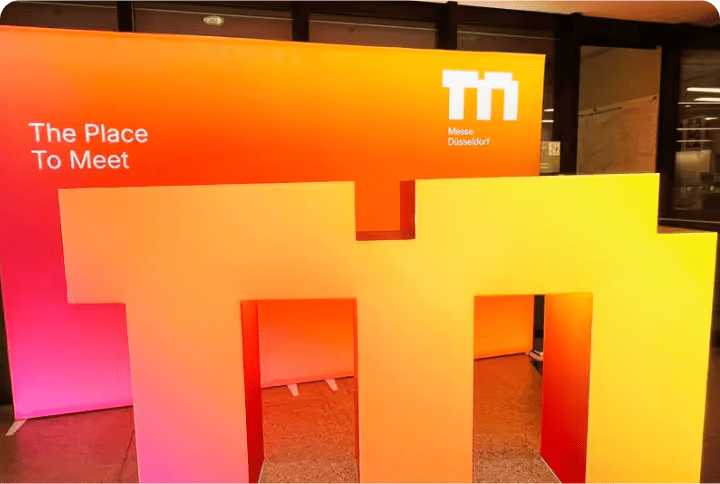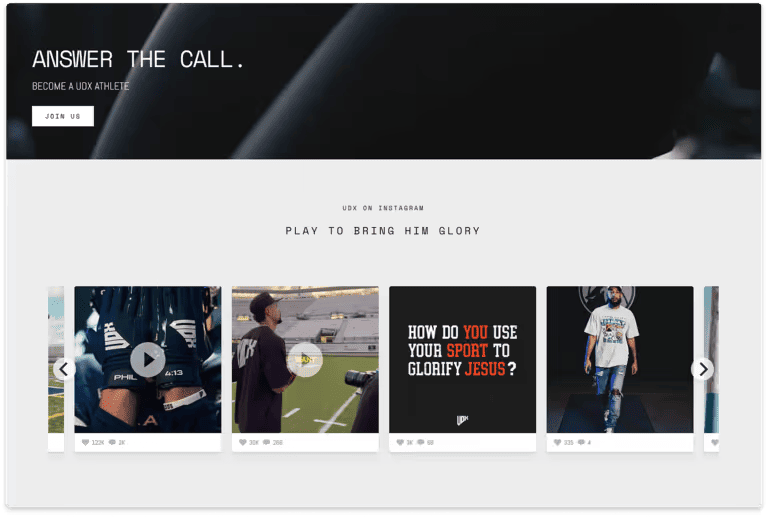Summary
- 90% of consumers are influenced by user-generated content (UGC) over brand ads, and authentic customer voices now drive purchasing decisions.
- Brands using customer-created content see stronger engagement, 29% higher conversion rates, and longer time-on-site thanks to social proof and authenticity.
- UGC reduces content production costs while constantly adding fresh, keyword-rich material that improves search visibility and organic reach.
- From collecting and moderating customer posts to displaying live social walls and product galleries, using a trusted UGC platform helps brands turn authentic audience content into a powerful marketing engine.
Traditional marketing is almost dead in 2025.
Why?
With 90% of consumers being influenced by UGC in purchasing decisions over other forms of marketing, the customer’s word trumps every other form of marketing. Online content and testimonials from other customers can help you build, while a bulk of the marketing is done by your customers.
But what exactly comes under UGC, and how do you tap into this valuable resource and use it to elevate your brand?
Read on to learn how you can set up your UGC marketing for your brand with real-life examples and get inspired!
What is UGC marketing?
User-generated content (UGC) marketing can be defined as incorporating content created by your customers into your brand's marketing strategy. This can include customer photos, videos, reviews, social media posts, testimonials, and any other content that showcases real experiences with your brand.
This is an effective way to get customers to spread valuable word of mouth about your product instead of relying on corporate marketing strategies. For example, a hotel can display positive guest Instagram or Facebook posts on its website rather than running a by-the-numbers marketing campaign. Another example of UGC content would be early Amazon and Trustpilot reviews for different products.
UGC content is on the rise due to the free flow of information on social media, and brands are increasingly using tools like an AI UGC creator to streamline content collection and repurposing. Any customer can discuss products across all major platforms such as Instagram, TikTok, and YouTube. And, when someone posts about your brand, they're broadcasting your brand image to potentially thousands of viewers.
Benefits of UGC Marketing | Why UGC Marketing Matters More Than Ever

Today's creator-driven web 2.0 internet has elevated UGC from simple online reviews to a sophisticated marketing channel where authentic customer voices often outperform expensive ad campaigns. Here are some of the core benefits UGC can offer to your brand:
Builds brand trust and authenticity
Due to strict privacy laws such as GDPR, third-party cookies have lost sway in social media ad targeting, and 79% of consumers now demand better control over their data.
Moreover, consumer testimonials and buzz with no monetary incentive come across as more honest and genuine than paid corporate campaigns. It carries weight that no ad campaign can match.
This goes a long way in creating genuine connections between brands and customers.
Remember, people want to see themselves reflected in the brands they support. UGC provides the social proof and validation that real people like them use and love your products, especially for prospects still in the decision-making phase.
Increases Engagement and Reach
User-generated content drives significantly higher engagement than branded content. When customers create content about your brand, they're likely to share it with their networks, exponentially expanding your reach without additional ad spend.
UGC campaigns also encourage active participation from users. A hashtag for a trend linking back to a brand can inspire hundreds or thousands of customers to create and share content, and generate massive organic visibility.
Reduces Content Creation Costs
Creating high-quality social media content can be time-consuming and expensive. Instead, you can curate and showcase the authentic content featuring your brand created by your customers, and maintain a steady stream of fresh, diverse material.
This helps provide a sustainable alternative to expensive marketing endeavors, such as photo shoots or video content production, while maintaining authentic customer perspectives.
Boosts Conversion Rates and Time-on-Site
Yes, UGC content can directly impact your bottom line. Product pages featuring customer photos and reviews can see a 29% higher conversion rate than those with only branded images. Visitors spend more time exploring UGC galleries, increasing engagement and the likelihood of purchase.
When prospects see real people using your product and reviewing it in real situations, it reduces uncertainty. This is particularly effective for industries with multiple options, such as e-commerce, hospitality, and consumer goods.
Enhances SEO and Organic Visibility
An often overlooked aspect of UGC is how it helps in SEO. Search engines value fresh, relevant content, and UGC galleries and social walls provide exactly that by constantly updating content that search engines love. Customer reviews, testimonials, and social posts add keyword-rich text to your website naturally.
Additionally, UGC often generates backlinks and social signals that boost your domain website’s authority. Content shared by customers that features your brand is a great indicator of relevance and trustworthiness for search engines.
How to Build a UGC Marketing Strategy
We’ll show you how to do it on Flockler and how you can try it out for yourself
1. Identify Your Goals
Start by defining your objectives and what you are aiming to do with your UGC campaign. This can range from boosting brand awareness, increasing website conversions, strengthening community engagement, or gathering content for marketing campaigns.
Your goals determine which platforms to focus on, what type of content to encourage, and how to measure success. For example, a furniture brand might prioritize use cases and testimonials, while a fashion label focuses on user styling photos and outfit inspiration.
2. Choose the right channels to gather UGC from
Make sure you know which social media platform or channel you want to use for your UGC content. Not every social platform delivers the same UGC results.
For example, Instagram and TikTok are ideal for visual-first industries like fashion or travel, while embedding LinkedIn feeds can suit B2B storytelling and professional services.
Where you get UGC from largely depends on where your audience shares content.
On Flockler, you can choose between multiple platforms and combine them all into one. Sign up for a 14-day free trial and get started today!
3. Create branded hashtags and encourage participation
A memorable, campaign-specific hashtag helps centralize your UGC. Keep it short, unique, and tied to your brand. Promote it across social bios, emails, packaging, and events. You can also explore relevant hashtags to identify the ones that spark authentic conversations about your brand.
💡Tip: You can incentivize participation through contests, shoutouts, or exclusive perks. The more you highlight real customer content, the more others will join in.
4. Moderate and curate user submissions
Not all UGC fits your brand voice or quality standards. Use a moderation process to review and approve content before publishing. Curate submissions that reflect your values and have the right permissions.
Flockler’s UGC platform simplifies this process with tools for quick approval, filtering, and content rights management. Garde AI allows you to moderate your UGC content and fine-tune your campaign.
5. Showcase UGC Across Your Channels
Bring your UGC to life by embedding it where it matters most, be it your homepage, product pages, or live event walls. Choose the right outlet based on your target audience and where they are more likely to view your UGC campaign.
Remember, Flockler allows you to repurpose the same content feed across multiple displays from website embeds to event screens, maximizing every customer post.
Best UGC Marketing Examples
Here are the 6 best UGC campaigns to take inspiration from.
1. GoPro’s adventure UGC campaign

GoPro has long embraced customer-created content with thousands of users capturing their own adventures using GoPro-branded cameras. With Flockler, GoPro was able to aggregate posts and display them via a dedicated feed on its website.
The approach of turning happy customers into storytellers and letting their action-packed footage speak led to 34 thousand feed views.
2. Harvard University uses student & alumni voices

Harvard University needs no introduction. They use Flockler to collect and share social content from students, alumni, and campus life. The UGC feeds are embedded across the university’s website, campus TV screens, and digital signage. The result: a dynamic, ever-renewing showcase of the Harvard community in action, which helps humanize the institution and deepen connection.
3. Sohome uses UGC for E-commerce

Sohome, a home-wares retailer, embedded hashtag Instagram feeds and brand mentions using Flockler to create “shop the look” moments. Real photos from customers displayed on the webshop help turn UGC into direct inspiration. It’s a smart example of UGC being not just social proof but commerce-proof.
4. Messe Düsseldorf uses real-time UGC for Trade Fairs

Messe Düsseldorf, one of the world’s leading trade fair organizers, capitalized on the brilliant use of real-time UGC for events. With Flockler, they embedded dynamic social walls across event venues, websites, and digital screens. Attendees could share posts and photos using branded hashtags, which appeared instantly on live displays.
This helped turn the audience into active participants and amplified brand visibility and engagement.
5. Worktop Express uses UGC to promote its home interior services

Worktop Express used UGC from an embedded Instagram feed on the website to show a curated collection of customer photos with direct links to product pages.
This successfully resulted in a 30,000+ UGC feed views and increased user engagement.
6. UNDRDOG ATHLETIX uses Shopify testimonials for UGC

UNDRDOG ATHLETIX uses Flockler’s platform to bring user-generated content into their Shopify storefront to display real pics of athletes and customers wearing their gear. That means visitors see authentic customer moments before they buy, which adds credibility and influences purchase decisions.
Read: More examples of successful UGC campaigns
How to choose the best UGC marketing platform
With UGC being such a big deal, choosing the right platform can be the make-or-break for a successful UGC campaign. The ideal UGC platform should offer advanced features such as comprehensive moderation tools, rights management features, extensive customization, and powerful integration capabilities.
Flockler offers you a complete and comprehensive UGC solution for your workflow. With Flockler, you can:
- Connect your social accounts and hashtags to display a dynamically updating feed that continuously collects relevant content.
- Use Garde AI for stringent content moderation and allowing you to display only relevant and approved content.
- Comes with built-in rights management that ensures you're always compliant with copyright laws
- Allows you to embed visually stunning and flexible display options that are fully customizable to match your brand.
- Analytics to show which content drives engagement, helping you refine your UGC strategy over time.
Whether you're showcasing customer success stories, event coverage, or community highlights, Flockler makes it simple. Want to try it out for yourself? Try our 14-day free trial and harness the power of UGC content now!
FAQs
What is user-generated content (UGC)?
User-generated content refers to any content, such as photos, videos, reviews, social media posts, or testimonials, that customers create. It showcases authentic experiences and perspectives from real users.
Why is UGC important in marketing?
UGC builds trust and authenticity that branded content can't match. With 90% of consumers trusting UGC over branded content, it drives stronger engagement, higher conversion rates, and creates a genuine community around your brand.
How can I collect UGC legally?
Always request permission before using customer content. Implement a rights management system that tracks approvals. Flockler includes built-in rights management features that automate permission requests and maintain compliance.
How do I display UGC on my website?
Use a UGC platform to embed dynamic social feeds directly on your website. Tools like Flockler let you create customized displays that automatically update with new approved content, maintaining a fresh and engaging website experience.







